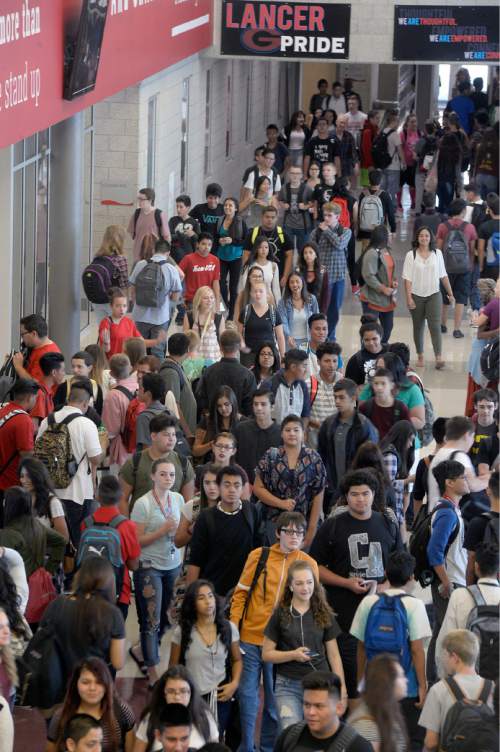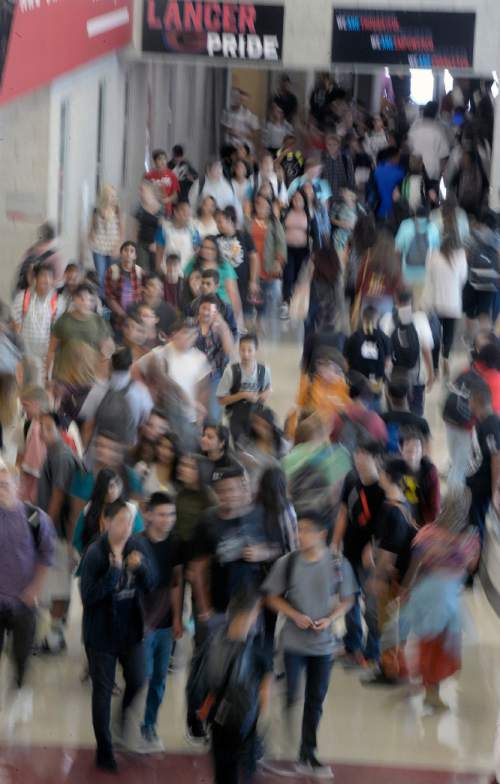This is an archived article that was published on sltrib.com in 2016, and information in the article may be outdated. It is provided only for personal research purposes and may not be reprinted.
Utah's schoolchildren boosted their math and science grades on their year-end test this spring, and English performance has stayed constant among the state's 600,000 public school students, according to data the State Board of Education released Monday.
Utah students in grades three through 11 began taking the computer-based exam in 2014. Since then, scores on the state-based test have edged upward.
The percentage of students "proficient" in math increased to 47, up from 45; science was 49, up from 47. Language arts was stagnant, at 44 percent.
It's not as big of a hike as last year, when math scores climbed 5 points statewide.
"We are pleased to see that thousands more Utah students showed proficiency in the last school year," David Crandall, chairman of the State Board of Education, said in a news release.
Utah's top overall performers in public schools was the Utah County Academy of Science in Orem, a charter, with 83 percent in English, 82 percent in science and 80 percent in language arts.
Still, Utah's traditional school districts outshined their charter school counterparts. But the charters improved more than they did last year.
Like traditional schools, charters receive per-pupil funding from the state, but they also have more leeway than traditional public schools in hiring decisions and curriculum.
On the Wasatch Front, Murray schools hovered at the state average. And Granite School District held steady from last year's scores, with an average of 32 percent across the three subjects.
Schools that struggled on the SAGE test this year were predominantly Spanish-speaking, such as West Valley City's Esperanza School, with 9 percent proficiency; or catered to at-risk students, such as Logan's Fast Forward High, with 8 percent; and West Valley's farm-focused Roots Charter school, with 6 percent.
Lawmakers in March removed a requirement for schools to evaluate teachers based on the test results amid criticism that the tests that do not count for a grade failed to reflect students' knowledge. And SAGE no longer is mandatory for high schoolers.
But the test still will be used in the board's annual accountability report known as school grades, which is scheduled to be released Sept. 15.
Even though its role has lessened, SAGE is an important measuring tool, Crandall added, because it helps schools tailor instruction to students' needs.
"Our goal is to continue moving in the right direction to ensure all Utah students show growth in these crucial subject areas."
The state is making progress toward that goal. Students of all races improved in math and science, the agency said.
When it comes to English, performance dipped slightly for black, white, and Pacific islander students. American Indian, Asian and Latino students showed improvement.
Twitter: @anniebknox







